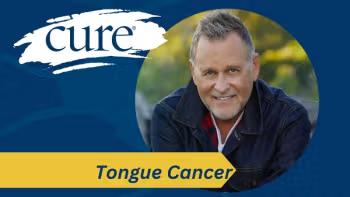
Olivia Newton-John and Metastatic Breast Cancer
The star heads into the world of ongoing breast cancer treatment just as a major new study of metastatic breast cancer in the United States gives a little more hope to those with the disease
When I’m feeling down, one of my favorite things to do is both free and a little embarrassing: I “Google” my favorite movie dance scenes and watch them for far too long. Perhaps not surprisingly, one of my favorites features John Travolta and Olivia Newton-John in the last dance sequence from Grease.
Of course, nearly 40 years have passed since that movie and now when I watch that scene, I think about the early-stage breast cancer diagnosis that Newton-John faced 25 years ago, her subsequent impressive funding of cancer research, and now, sadly, her diagnosis with metastatic breast cancer.
Back in 1992, she joined an unfortunately long list of celebrities diagnosed with breast cancer, but with the metastatic (stage 4) diagnosis, Newton-John is faced with a much shorter list because those who we know had metastatic breast cancer have since died of the disease.
As a woman with metastatic breast cancer, I was saddened to hear of Newton-John’s diagnosis, but I quickly wondered if her celebrity would lend a voice to the thousands of women living with incurable stage 4 breast cancer in the United States.
I didn’t have to wait long: Like many of us, Newton-John is an optimist. At this time, there’s no talk—at least publicly—about what a metastatic diagnosis means in breast cancer. In short, it means that the disease will kill you. That’s not something that fits a celebrity-driven world nor is it something that many of us more “normal” stage 4 patients want to acknowledge.
Really, who would? And who would want to spend a life worrying that breast cancer might metastasize when all indications are that it is gone if not for good then at least for now?
But that fear of recurrence is warranted for breast cancer survivors since approximately 30 percent of early-stage diagnoses will eventually be rediagnosed as metastatic and new research indicates that 3 out of 4 women with stage 4 were initially stages 0-3. Although I don’t know what type of breast cancer Newton-John has, hormone-receptor-positive breast cancer is most likely to be found to have metastasized later than five years from the original diagnosis. It is unfortunate that so many women continue to believe that once they’ve reached that five-year mark, they are home free.
Coincidentally, Newton-John’s cancellation of her concerts and acknowledgment of the spread of breast cancer to her sacrum coincided with the release of a major review of the status of metastatic breast cancer in the United States (
155,000 is not a lot but it is more than in the past (in comparison, 1.25 million Americans live with Type 1 diabetes). Once upon a time, in the very near past, metastatic breast cancer was an immediate death sentence. Today, a person diagnosed with stage 4 breast cancer would very likely do one treatment until it stopped working then go on to another until it stopped working and so on. Of course, there isn’t a parade of treatments into infinity and there are also the many side effects of cancer treatment and progressions of the disease that can seem to trick so many medical interventions. So, while Newton-John and the rest of us metastatic patients might hope to live for a reasonable number of years and with a reasonable quality of life, we know that treatment is ongoing.
Because there is a lack of information about who has metastatic breast cancer due to a collection system that doesn’t “count” stage 0-3 patients who go on to have stage 4 disease (to do something about that, sign this https://www.change.org/p/seer-start-counting-all-people-living-with-metastatic-breast-cancer), survival information is based only on those patients who were diagnosed metastatic (de novo) from the start. There, the news is better than in the past but suitably grim: Women diagnosed between the ages of 15 and 49 have a five-year relative survival rate of 36 percent but for women ages 50 to 64 at diagnosis, the median survival increased from 19.1 months in 1992-1994 to only 29.7 months in 2005-2012.
30 months.
Yep.
As I read about Newton-John, I had that number floating around my mind. I do know a little more, though, from the same review of de novo metastatic breast cancer patients: 11 percent of those under age 64 diagnosed with de novo metastatic breast cancer between the years of 2002 and 2004 survived for 10 years or more. But that study, due to the manner in which the US collects breast cancer data, does not tell us anything about women whose cancer spreads after a diagnosis at an earlier stage, as happened with Newton-John.
I hope she has more than 30 months. I hope the same thing for every person faced with a metastatic breast cancer diagnosis. The pink ribbons, celebrations, and focus on “awareness” doesn’t always leave room for the full truth: Breast cancer kills and it kills fast for many of us. Thirty months may not be an immediate death sentence but it also isn’t a full lifetime.




